Many years ago, as a middle-schooler, I attended a one-week summer chess camp in New York state. There were many excellent instructors at the camp, but my favorite was Aviv Friedman, a FIDE master originally from Israel. He had a real knack for finding interesting and instructive positions to show us, and he always presented things with clarity and humor.
So I was delighted to discover recently that he has become a regular lecturer at the Chess Club and Scholastic Center of St. Louis, and that many of those lectures are available on YouTube. I've been dutifully working my way through them. In many cases he concludes his lectures with a fun composition. An example is this week's problem. The following position was composed by Yochanen Afek and calls for white to play and win:
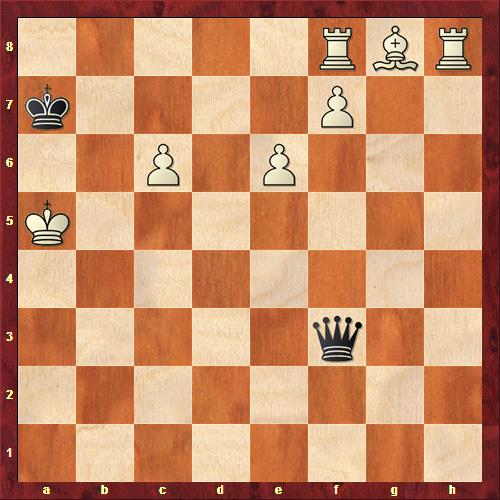
This is another one-liner, so you might want to have a go at it before reading on.
Now, white certainly as enough material to compensate for the queen. The trouble is that white's army is tied up in the northeast corner. He does not have time to untangle his army slowly. With the white king adrift on an open board, black will have little trouble summoning forth a perpetual check.
So white needs to take drastic action. He starts with 1. Ra8+ Kxa8 2. f8Q+ Qxf8:
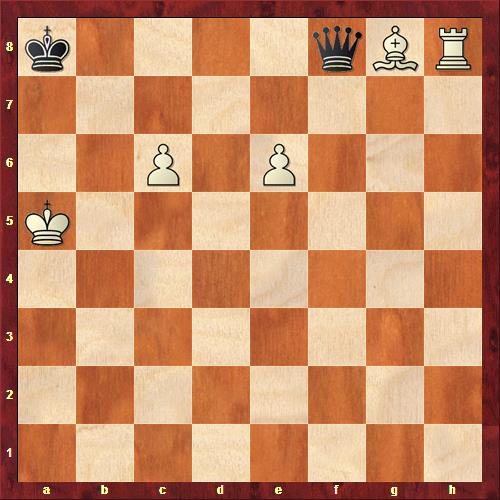
White continues with 3. e7. What can black do? If he does not take the pawn, but instead plays something like 3. ... Qc8, then white wins prosaically with 4. Bf7 followed by queening the pawn. So black must take the pawn on e7. Play continues 3. ... Qxe7 4. Bd5+ Ka7:
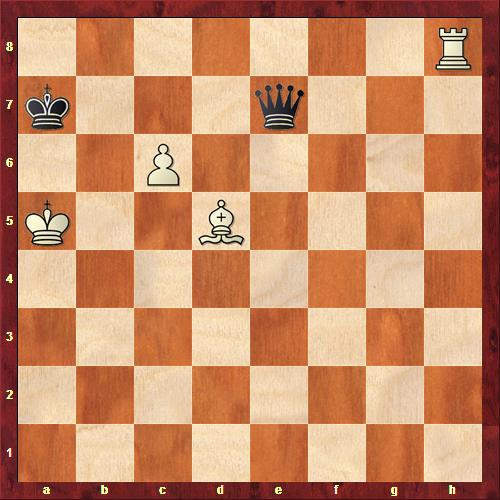
Now what? Well, white has one more rook to sacrifice 5. Ra8+ Kxa8 6. c7+ :
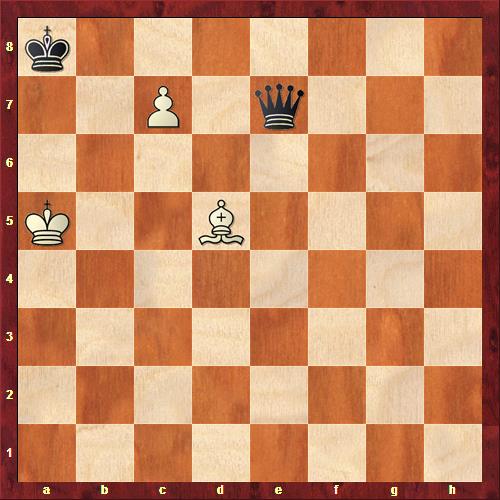
And now we're ready for the big finale: 6. ... Ka7 7. c8N+.
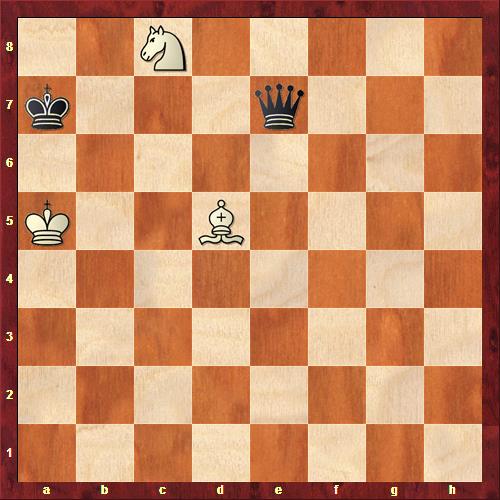
White forks the king and queen, and will go on to show his technique in mating with the king, knight, and bishop. Very nice!
See you next week!
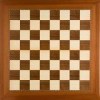
Jason, if you haven't seen this, thought you might find it interesting. (skip to 4:10ish or so to get to game play)
https://www.youtube.com/watch?v=0HV7Hl357GM
Oh man, I can never remember how to mate with N+B. I would be feeling so proud of myself after pulling this off, and then I'd have to frown later as I hit the 50 move rule or draw by repetition.
Do you have a link for the videos, by the way?
Many years ago I spent some time trying to learn the mate with king, bishop, and knight. I got pretty good at it, but it has been quite a long time since I've looked at it. If I had enough time on my clock I'm sure I could figure it out, but I don't think I could do it in a blitz game.
For the videos, just go to YouTube and search on "Aviv Friedman."
Hey!! A problem I actually managed to solve pretty quickly!! Practically unheard of.
I had the B&N ending in a speed game online about a week ago & hit 50 moves just as I think I was getting there.....
I'll say this much - it's easier than K+2N vs K+P. Stockfish doesn't always manage to win that one.
Not sure if it works but why not 3...Qf5+ with an attempt at perpetual check on the white king?
Oops. Of course, 4Bd5+ wins.
Indeed, it's a mate in 5. 4 ... Ka7 5 Ra8+ Kxa8 6 e8(Q)+ Ka7 (all forced) and now 7 Qe7+. If the king moves to a8 or b8, Qb7 is mate, while 7 ... Qd7 8 Qxd7+ only holds out for one more move.